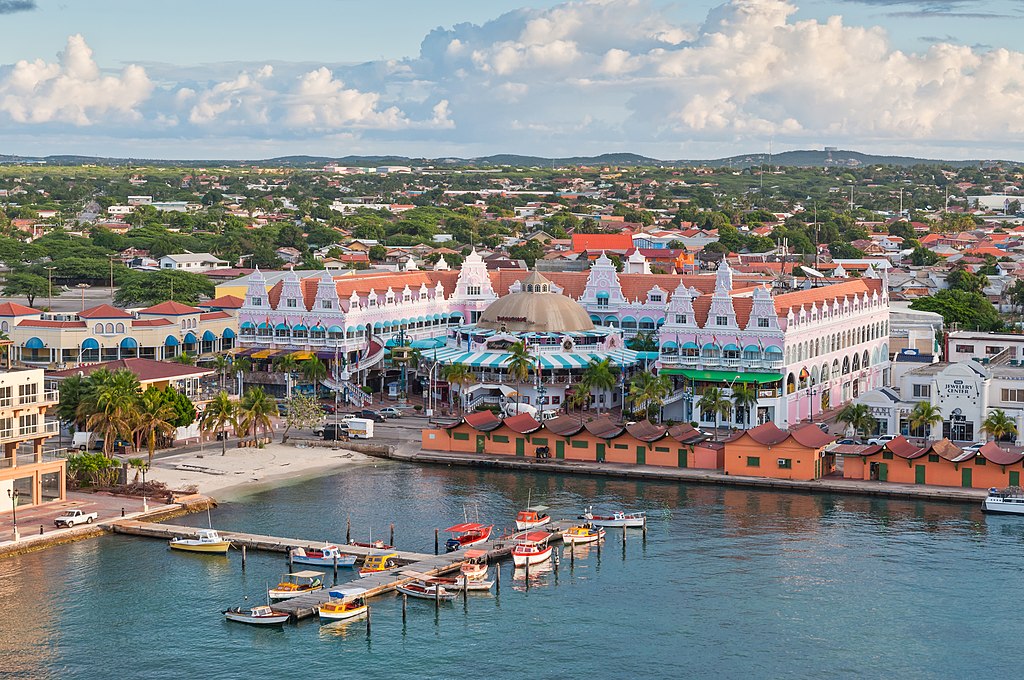Are you dreaming of pristine beaches, crystal-clear waters, and vibrant culture? A trip in Aruba might just be the escape you’ve been longing for. This Caribbean paradise offers a unique blend of relaxation and adventure that caters to every type of traveler. With its warm climate year-round, stunning landscapes, and friendly locals, Aruba feels like an endless vacation.
Whether you’re planning a romantic getaway or a family adventure, knowing how to navigate your journey can make all the difference. From choosing the best time to visit to uncovering hidden gems off the beaten path, this ultimate guide will help you craft an unforgettable experience in Aruba. So pack your bags and get ready; your dream island retreat awaits!
When to Visit Aruba
Aruba enjoys a warm, sunny climate year-round, making it an ideal destination any time you choose to visit. However, the best months are generally from mid-December to April. During this period, you’ll experience pleasant temperatures and minimal rainfall.
If you’re looking for fewer crowds and lower prices, consider traveling in the shoulder seasons—late April to June or September to early November. The weather remains lovely during these months but expect some occasional rain showers.
Hurricane season runs from June through November, though Aruba is located outside the hurricane belt. This means that while storms can occur, they are less likely to impact your vacation plans directly.
Events like Carnival in February and local festivals throughout the year offer unique cultural experiences if you want something special during your trip in Aruba. Time your visit right for a truly memorable adventure!
How to Get to Aruba
Getting to Aruba is easier than you might think. Most travelers fly into Queen Beatrix International Airport, located just a few miles from Oranjestad. Numerous airlines connect major cities in the United States, Canada, and Europe directly to this sunny paradise.
Once you land, navigating through customs is simple. The airport has efficient protocols that make your arrival smooth. You can also find various transportation options right outside—taxis, rental cars, and shuttles are readily available.
If you’re looking for an adventurous start to your trip in Aruba, consider taking a cruise that stops at the island. This allows you to experience multiple destinations while still enjoying Aruba’s stunning beaches and vibrant culture.
Be sure to check travel requirements before booking your ticket. Some countries may have specific entry regulations or health guidelines in place. A little preparation goes a long way when planning your getaway!
Where to Stay in Aruba
Aruba offers a range of accommodations to suit every traveler’s needs. From luxury resorts to cozy boutique hotels, there’s something for everyone.
If you crave beachfront bliss, consider the Palm Beach area. Here, lavish resorts provide stunning ocean views and direct access to pristine sands. Enjoy pampering spa treatments and high-end dining right at your doorstep.
For a more local experience, explore Oranjestad. This charming capital has colorful architecture and vibrant markets. Boutique hotels offer an authentic feel while keeping you close to cultural attractions.
Nature lovers may prefer staying near Arikok National Park. Eco-lodges immerse you in Aruba’s natural beauty with hiking trails just steps away from your room.
Traveling on a budget? Check out hostels or vacation rentals that are both affordable and comfortable, allowing you to save money for unforgettable excursions around the island.
Must-See Attractions in Aruba
Aruba is a treasure trove of attractions that captivate every type of traveler. Start your journey at Arikok National Park, where rugged landscapes meet stunning coastlines. Hike through trails and discover unique flora and fauna.
Don’t miss the iconic Natural Pool, a hidden gem surrounded by volcanic rock formations. It’s perfect for swimming or simply soaking up the sun in an incredible setting.
Visit Oranjestad, the capital city, to explore colorful buildings and vibrant markets. The local shops offer everything from souvenirs to luxury goods.
For history enthusiasts, Fort Zoutman provides a glimpse into Aruba’s colonial past with its well-preserved architecture and museum exhibits.
Relax on Eagle Beach—often voted one of the best beaches in the world—with its soft white sand and crystal-clear waters inviting you to unwind all day long. Each stop offers something special that enhances your trip in Aruba.
Local Cuisine and Dining Options
Aruba’s culinary scene is a delightful fusion of flavors. Local dishes often reflect influences from Africa, Europe, and South America. You’ll find fresh seafood at the heart of many menus.
Don’t miss trying “keshi yena,” a savory stuffed cheese dish filled with meats and spices. It’s a must-have for any food enthusiast.
Street food is another highlight. Vendors offer tasty treats like “pastechi,” flaky pastries filled with cheese or meat that make for perfect snacks on-the-go.
For dining options, explore everything from beachfront shacks to upscale restaurants. Many establishments emphasize local ingredients and traditional recipes.
Pair your meals with Aruba’s famous Balashi beer or refreshing tropical cocktails crafted with island fruits. Each sip complements the vibrant dishes perfectly—making every meal an experience in itself.
Be sure to venture into local markets too; they provide insight into daily life and showcase unique artisanal products worth tasting!
Outdoor Activities and Adventures
Aruba is a paradise for outdoor enthusiasts. The island’s stunning landscapes beckon adventurers to explore.
Snorkeling and scuba diving are must-try activities. Colorful coral reefs teem with marine life. You’ll encounter vibrant fish, graceful sea turtles, and even shipwrecks waiting to be discovered beneath the waves.
For those who prefer to stay on land, hiking trails offer breathtaking views of rugged coastlines and hidden beaches. Don’t miss Arikok National Park, where you can navigate through unique geological formations.
Wind or kite surfing along the famous Eagle Beach brings excitement for thrill-seekers. The steady trade winds create perfect conditions for both sports.
If you’re looking for something more relaxed, consider horseback riding on pristine shores at sunset. It’s a beautiful way to connect with nature while enjoying Aruba’s picturesque scenery.
With so many options available, your trip in Aruba will be filled with unforgettable adventures under the sun!
Tips for Budget Planning and Currency Exchange
Planning a trip in Aruba doesn’t have to break the bank. Start by setting a clear budget that includes accommodations, meals, activities, and transportation. Prioritize your must-see attractions so you can allocate funds wisely.
When it comes to currency exchange, the local currency is the Aruban florin (AWG). However, US dollars are widely accepted everywhere. If you plan on exchanging money, do it at banks or authorized exchange offices for better rates.
Consider using credit cards with no foreign transaction fees for larger purchases. This is often more convenient and secure than carrying cash.
Be mindful of ATM withdrawal limits as well; they may charge fees per transaction. Always keep some cash handy for small vendors and tips since not all places accept cards.
Research happy hour deals or lunch specials ahead of time to save on dining without missing out on local flavors.
Safety Precautions and Cultural Etiquette
When traveling to Aruba, safety should always be a priority. The island is generally safe for tourists, but taking common precautions never hurts. Keep your belongings secure and avoid displaying valuables in public areas.
Being aware of the local customs enhances your experience. Arubans are friendly and welcoming. A simple greeting goes a long way; learn basic phrases like “bon dia” (good morning) or “danki” (thank you).
Dress modestly when visiting religious sites to show respect. Swimwear is perfect for beaches but not appropriate in town.
Tipping is customary in restaurants and bars, typically around 15-20%. This practice shows appreciation for good service.
Embrace the Aruban culture by participating in local events or festivals if they coincide with your visit. Engaging with residents can provide insight into their vibrant traditions and customs.
Credit photo : Navigator334, CC BY-SA 4.0 https://creativecommons.org/licenses/by-sa/4.0, via Wikimedia Commons




